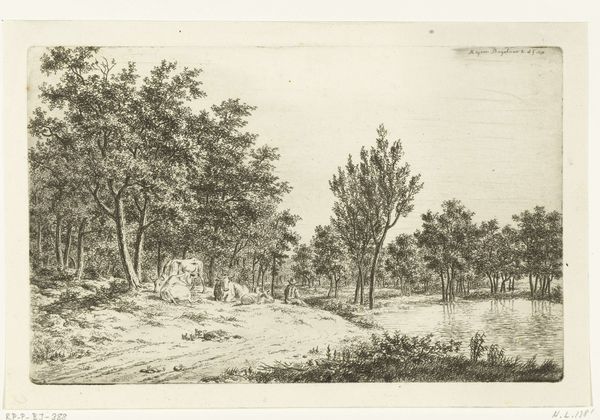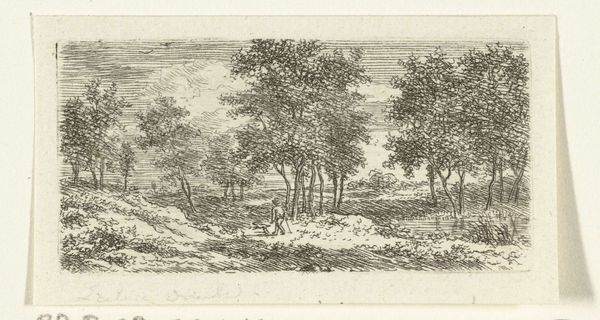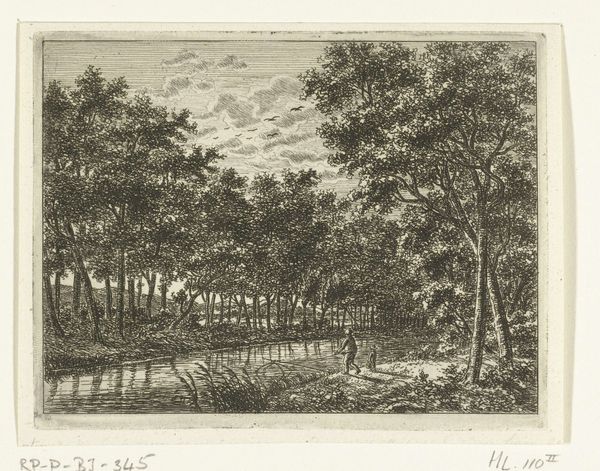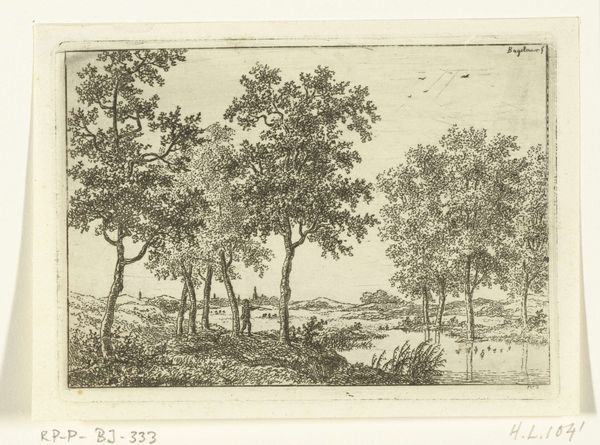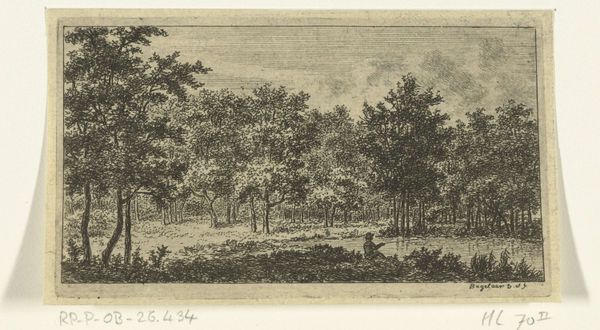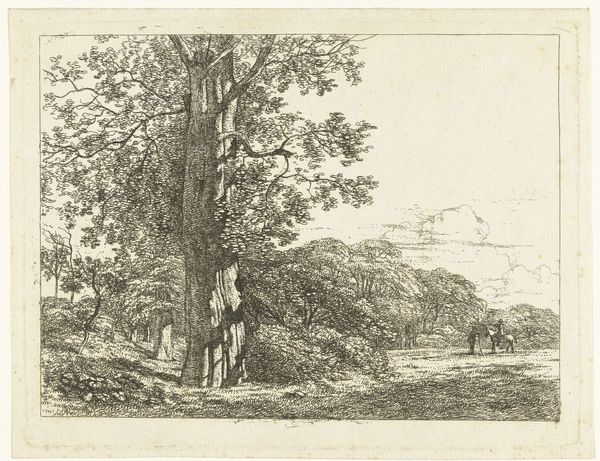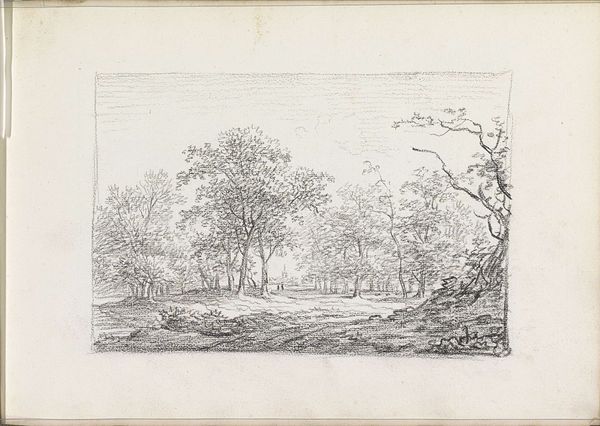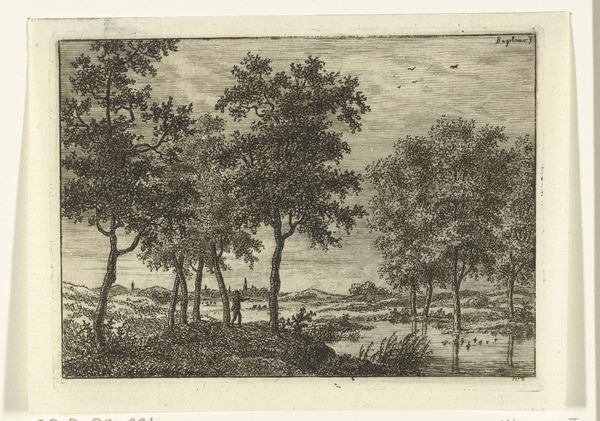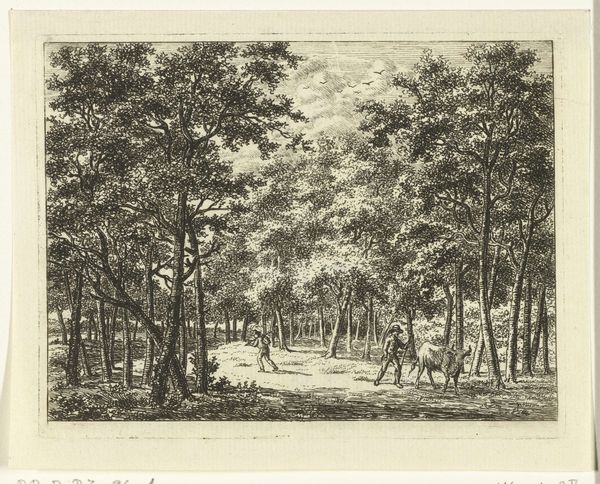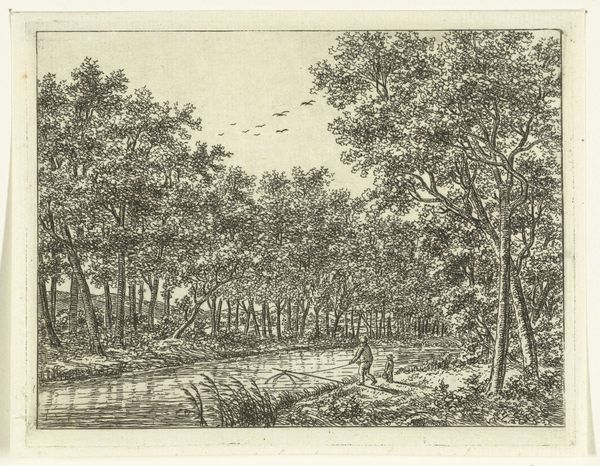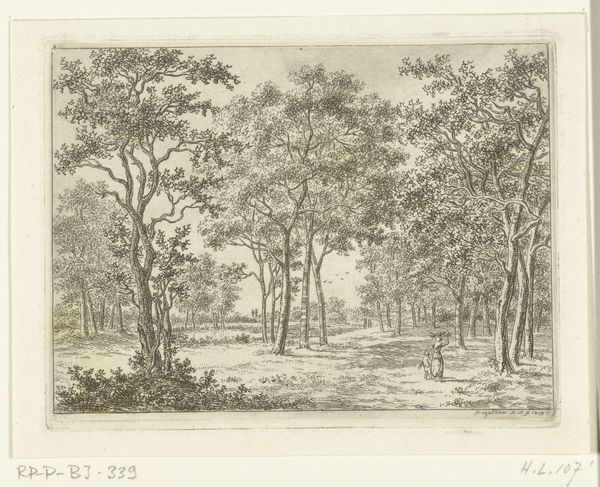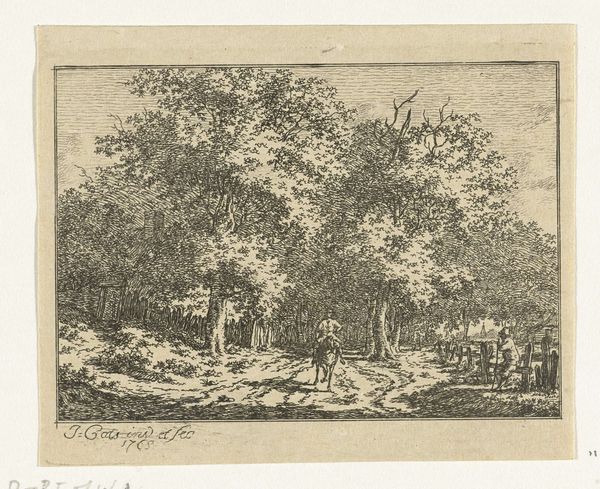
print, etching
# print
#
etching
#
landscape
#
etching
#
romanticism
#
realism
Dimensions: height 36 mm, width 72 mm
Copyright: Rijks Museum: Open Domain
Ernst Willem Jan Bagelaar made this etching, "Wooded Landscape with Shepherd and Cattle," sometime in the early 19th century. It evokes a particular vision of rural life in the Netherlands. But how should we understand this image? During this period, landscape art played a significant role in shaping national identity. As cities grew and industrialized, idealized images of the countryside became increasingly popular. They offered an escape from urban life and reinforced ideas about the nation's history. The detailed rendering of trees and the inclusion of a shepherd may have resonated with ideas about nature. To understand this artwork better, we can turn to archival sources. Letters, diaries, and institutional records help us understand the artist's motivations and the context in which the work was made and the meaning it had for audiences at the time. Ultimately, the meaning of art changes over time, depending on its social and institutional context.
Comments
No comments
Be the first to comment and join the conversation on the ultimate creative platform.
